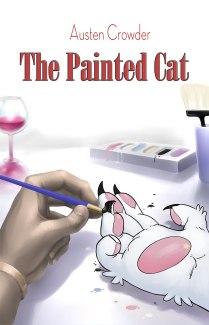Trick or Treat, Volume 2: Historical Halloween – Book Review by Fred Patten.
by Patch O'Furr
Submitted by Fred Patten, Furry’s favorite historian and reviewer.
(I considered holding this for October – but Fred reminded me that Trick or Treat Volume 3: Pranks, Parties, and Pumpkins will be out – so enjoy it now!) – Patch
 Trick or Treat, volume 2: Historical Halloween, edited by Ianus J. Wolf.
Trick or Treat, volume 2: Historical Halloween, edited by Ianus J. Wolf.
Las Vegas, NV, Rabbit Valley Books, October 2014, trade paperback $20.00 (373 pages).
This is Rabbit Valley’s second annual (2014) Halloween theme anthology; “something for the adults to enjoy”, as last year’s volume said. It presents ten new stories; six scary horror “tricks” and four “delectable romantic and erotic” treats. The book’s fine wraparound cover is again by Stephanie “Ifus” Johnson.
Wolf points out in his Introduction that “historical” is treated liberally. “It is also worth noting that much of the original history of Halloween and its roots of Samhain that we ‘know’ are actually still debated in most academic circles.” (I can personally attest to its evolution. When I went to school in the late 1940 and early ‘50s, you were ‘wrong’ if you spelled Hallowe’en without the apostrophe between the two e’s. Today, nobody bothers with it.) “So relax, have some fun, and don’t think too much of this as a history lesson.” (p. 2)
The anthology is again divided into two parts, each presented by one of the anthropomorphic hosts. Trick the wolf gives us six scary “tricks”, and Treat the black cat follows with four erotic “treats”.
“Jenny-Burnt-Tail” by Huskyteer is set in the British trenches during World War I. A Scottish (terrier) trooper carves a turnip into a jack-o-lantern on All Hallows Eve, and Captain fox tells his men a seasonal reminiscence from his childhood. This story isn’t as scary in itself as the way that Huskyteer tells it, with convincing 1915 British accents and slang. The mud and mist and cold and wet, with enemy snipers all around and maybe poison gas – you really feel that you’re there; never mind any spooks that may also be there. It’s educational, too; you’ll learn a half-dozen regional names for will-o’-the-wisps (including Jenny-Burnt-Tail, which is genuine despite sounding like it was created for this anthropomorphic world). A superb mood piece. Read the rest of this entry »



 The first edition of A Whisper of Wings was arguably the first professional furry specialty press book ever published, by Vision Novels in October 1999. Anything before that was really a fanzine calling itself a book.
The first edition of A Whisper of Wings was arguably the first professional furry specialty press book ever published, by Vision Novels in October 1999. Anything before that was really a fanzine calling itself a book. 45 pages), Kindle $2.99.
45 pages), Kindle $2.99.





